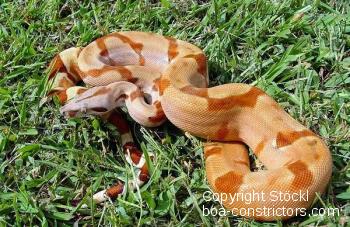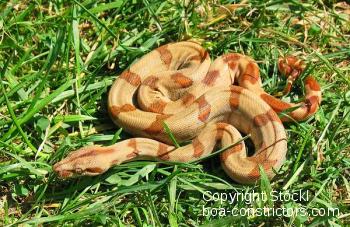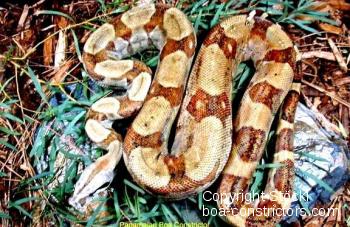Boa constrictor sabogae - The proven bloodline
Distribution areaThe Pearl Islands and the islands of Cha Mar, Taboga und Tabogilla 22 km off the coast of Panama
Estimated average length of mature females We think that the females can reach almost 6 ft in length
Particularity It is rather dubious whether there are any healthy populations left in the distribution area Taboga
Taxonomic statusBoa c. sabogae is a valid subspecies in accordance with the CITES law
| proven Bloodline |
| already extinct |
True Boa constrictor sabogae | Boa c. Saboga information | Sabogae Boa constrictor information | Taboga Islands | Pearl Islands | Panama Boa constrictor| Salmon Hypos | Boa c. sabogae crossbreeds |Boa c. sabogae mutts | Boa c. sabogae Salmon Hypo crossbreeds
In 1999 a zoo in Costa Rica has obtained an export Cites for 6 Boa c. sabogae from the Panamian government. This Boa constrictor subspecies is probably the scarcest one.
Since the Panamanian law normally doesn’t allow the export of protected species, this exception was only possible because the zoo is federally recognized.
It was the first and so far the last time that the Panamanian government granted the export of Boa c. sabogae.
The runner of the zoo travelled two times for three weeks at a time to the Taboga Island complex in the inshore waters of Panama in order to catch the granted 6 specimens of Pearl Island Boas. However, he only found 5 specimens, who were then exported to Costa Rica. Three of them are still alive.
The breeding efforts in the zoo were finally successful in 2002 when the first Boa c. sabogae in captive housing were born. The parents were the Saboga Boas who were caught back in 1999 on the Taboga Island complex.
The Boa c. sabogae from this bloodline are the only ones worldwide whose origin from the corresponding distribution area is proven and documented.
Therefore the denotation "proven bloodline".
Soon after, the word of the breeding success has spread, rumour has it that there are supposedly other sources of Saboga Boas as well.
A well-known breeder in the U.S. presented alleged Pearl Island boas that were also captive born in Costa Rica.
Since we found this interesting we contacted the runner of the zoo in order to learn more about this issue.
He was well informed since he had been the one who has applied for the export permit for these animals in order to help a private breeder. According to the law in Costa Rica only zoos and merchants can apply for an export permit. A private breeder is not permitted to get such a document.
On behalf of this private breeder the runner of the zoo applied for export Cites documents for the boa babies. These animals were neither bred in the zoo nor are they from the zoo stock.
Till now, no evidence has been presented that the parents are actually Boa c. sabogae. The fact that they look like Saboga Boas is no proof at all, because there exist two kinds of Boa constrictor who only can hardly or even not (depends on the specimen) be told from true Pearl Island Boas. These two kinds of boas are the hybrid boas from the mainland Panama and the so-called „Salmon Hypos“from the USA.
1. The Mainland hybrides
Already STULL (1964, in LANGHAMMER, 1983) stated that the Pearl Island Boas can’t be distinguished from aberrant coloured Panama mainland boas.
Most likely these aberrant animals are descendants of Boa c. sabogae who were brought from the Pearl Islands and fused with the Boa c. imperator on the mainland of Panama afterwards.
Most of the hybrids are reported from the area near the dock where the daily ferry from Isla San Jose, the second largest of the Pearl Islands is landing at.
2. The Salmon Hypos
In Saboga Boas hypomelanistic specimens are very common. Of course, this trait also occurs in the aberrant coloured mainland form (Boa c. imperator X Boa c. sabogae hybrids).
A female Boa constrictor from Panama has become the forebear of all hypomelanistic boas in the U.S. by being mated with a male Boa c. imperator from Colombia in the early 90’s.
These hypomelanistic crossbreeds are very popular in the U.S. because of their appealing appearance. Some of these specimens can’t be distinguished from true Pearl Island Boas. It is unknown whether the female from Panama has been a Saboga Boa or a hybrid boa from mainland Panama.
Since we are talking about Salmon Hypos:
The first attempt to market Salmon Hypos from the U.S. as true Boa c. sabogae has already taken place in Germany. Although the trial failed due to the amateurish carrying out we are positive that this will not be the last attempt in this way.
There is no doubt that by now the scarce and desired Boa c. sabogae are attracting also dishonest people in the boa scene. A strong evidence for this is that in March 2005 in an internet boa forum a discussion took place on whether or not hotel bills and plane tickets to Panama can be considered as an evidence for the authenticity of smuggled Pearl Island Boas.
Apart from the fact that smuggling is a criminal act, plane tickets to Panama are not helpful to tell a Panama mainland hybrid boa from a Boa c. sabogae.
Assertions are no proof! Only a proof is a proof! Therefore the same rule applies as in all the other true Boa constrictor subspecies: The line of descent should be traceable back to its distribution area!
That means in regard of the Sabogae boas by presenting the corresponding documents, but not by telling smuggle stories or allegations that the boa is “most certainly” true.
One has only to take a look at the misery regarding the „true red tail boas“ in order to know how much lies are told in the Boa constrictor world.
The lines of a member of the boa forum schlangengrube.de are very applicable here:
„I have inquired as to Sabogae. According to some sources of information there should only be two specimens in Germany, then it turned to 13. And now suddenly you get dozens of them. It’s gross; no business is safe from it.”
We think he is right.
Everybody who acquires Saboga Boas whose origin is not documented by export- and import cites papers, is taking the risk to get a Salmon Hypo Boa, a hybrid boa from mainland Panamas or another kind of crossbred boa.
That doesn’t mean the seller is a bad guy. He also could be the victim of a fraud when he has bought his animals.
The ones who don’t take the “boa genealogy” seriously because they are credulous or for whatsoever reasons should be aware that the captive born Sabogae babies of an „unproven bloodline” will never reach the market value of the wildcaught bloodline of Boa c. sabogae who is completely documented.
But be careful: As we have already mentioned, not every of the of the exported animals are from the proven wildcaught bloodline.



